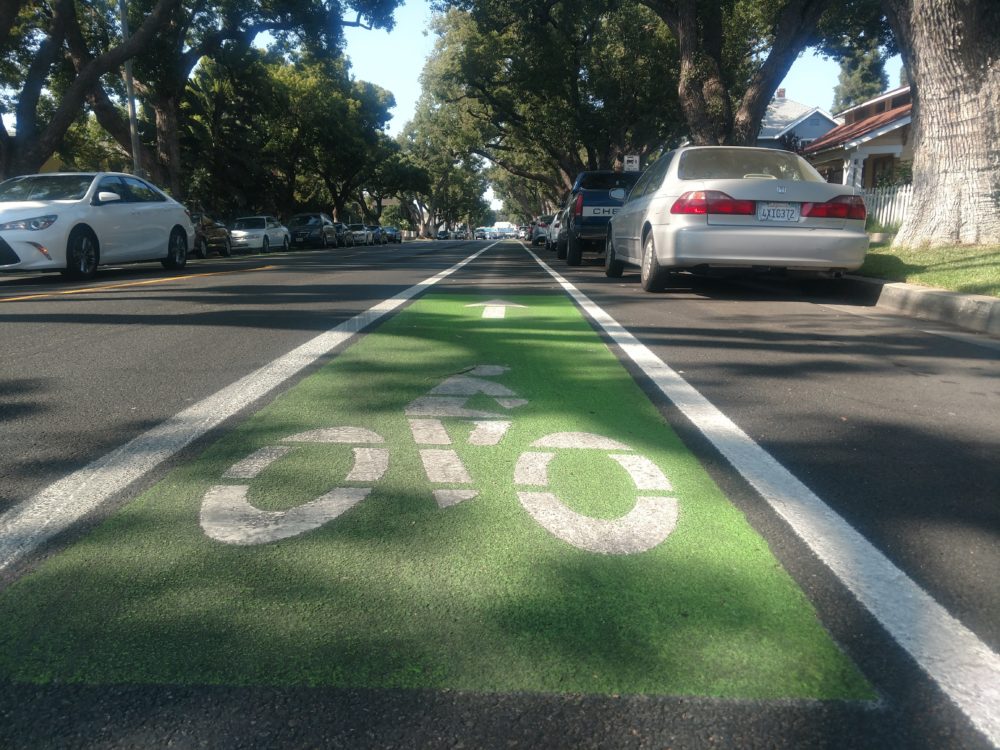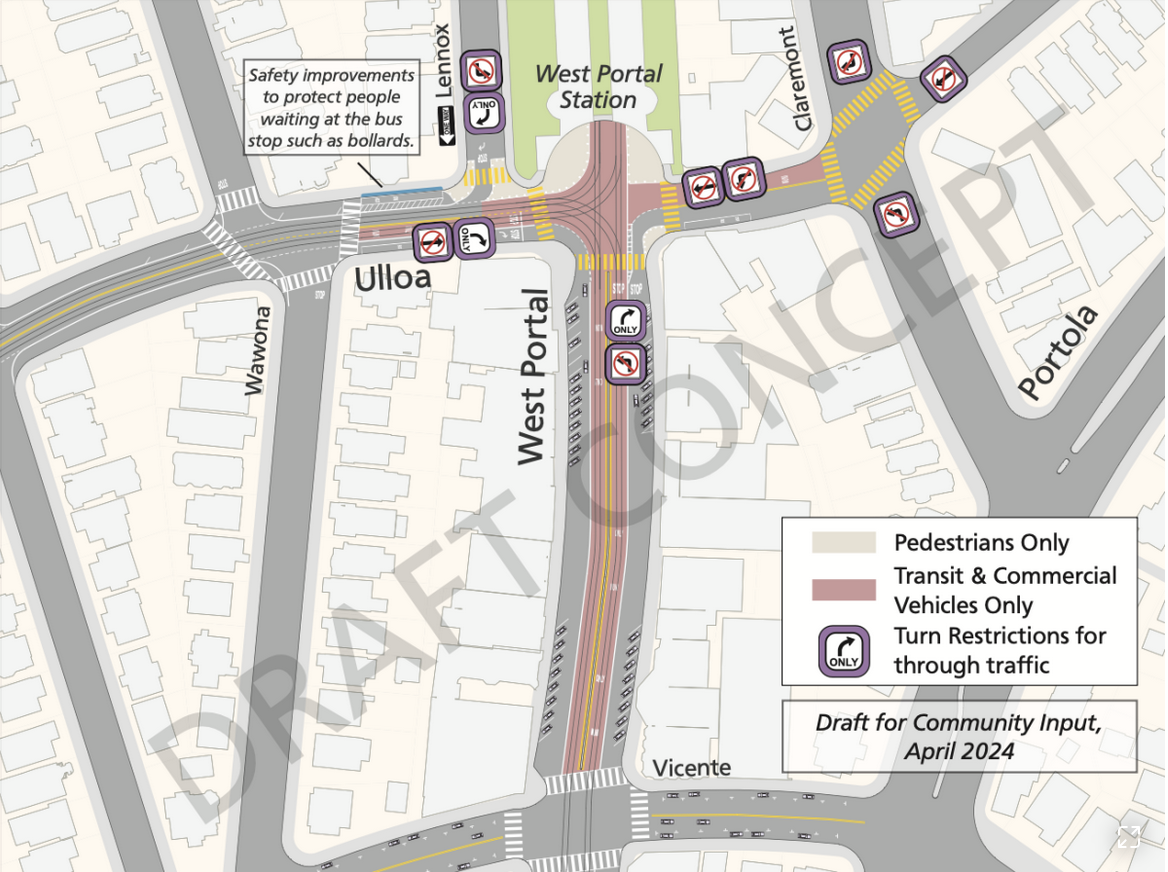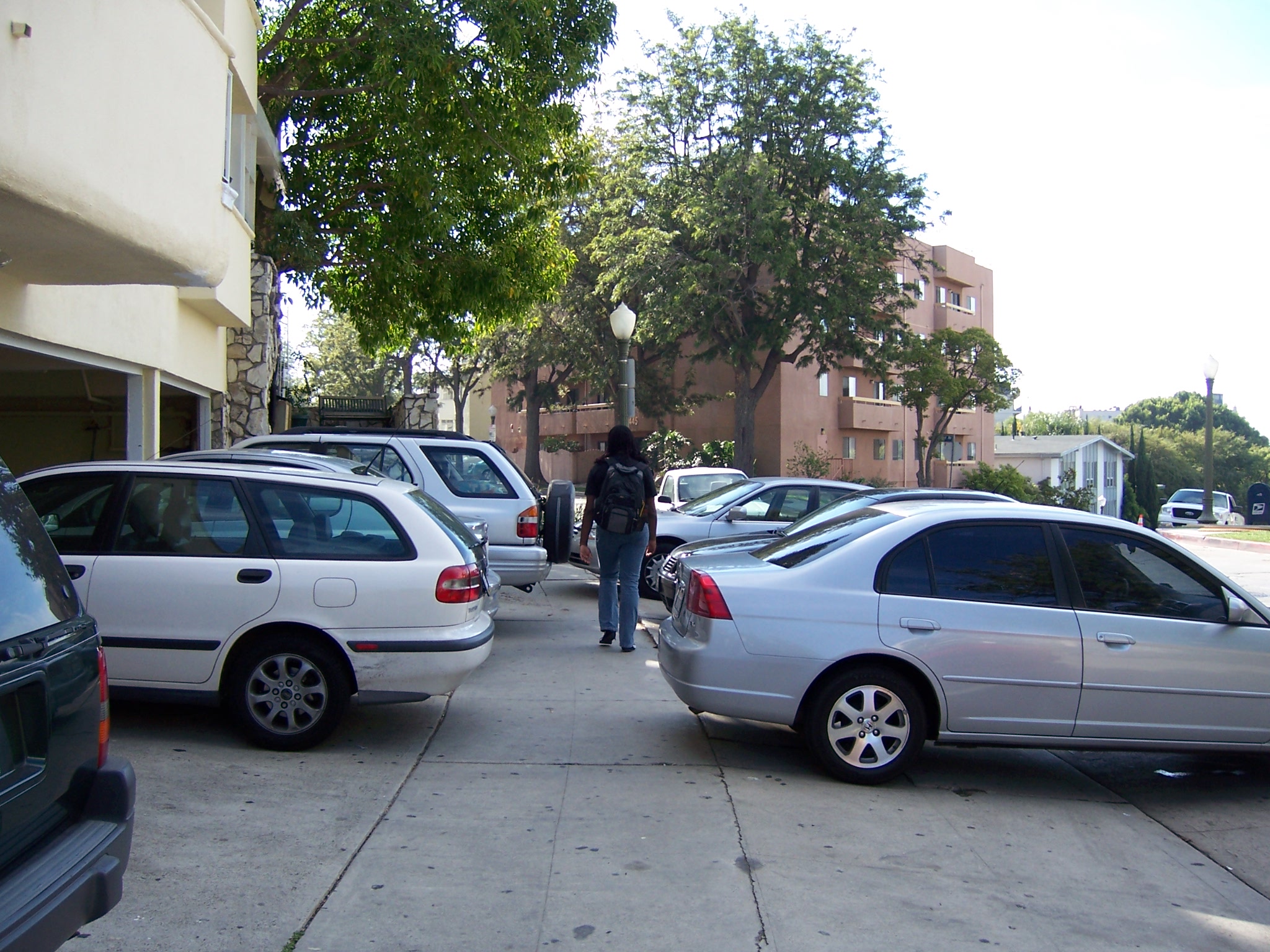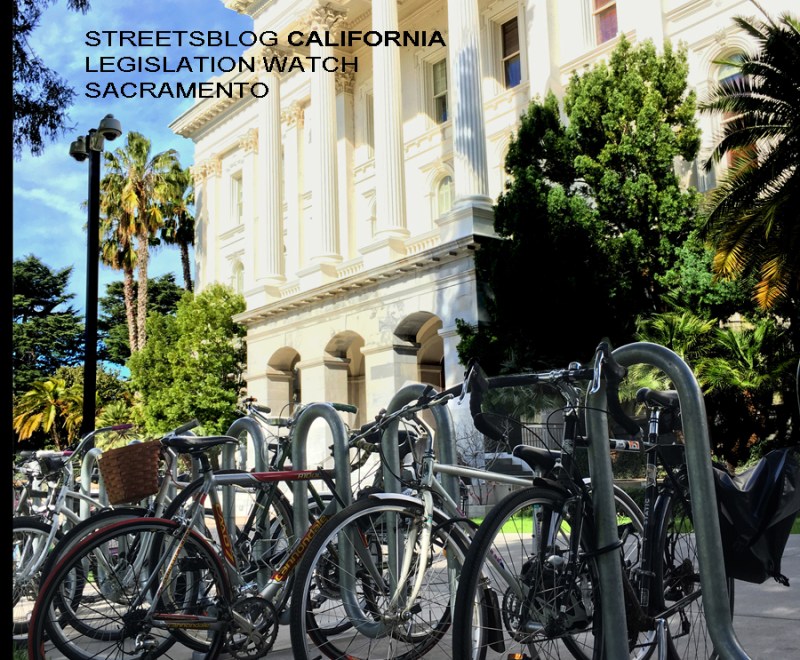Breaking Down Caltrans’ Cost Estimate of the Complete Streets Bill
10:09 AM PDT on August 30, 2019

Update: S.B. 127 passed out of Appropriations today (Friday) and is headed to the Assembly floor.
Senator Scott Wiener's bill, S.B. 127, would require Caltrans to add "complete streets" elements to its highways where they run through towns and cities when it repaves or does maintenance work paid for by the State Highway Operation and Protection Program.
Caltrans told Senator Wiener that the bill would cost an average of $4.5 million per center line mile, or as much as $1 billion per year. What is that cost estimate based on? Caltrans won't say.
When asked to explain the numbers, Caltrans' Public Information Office told Streetsblog: "Due to pending legislation, we are unable to discuss."
Well, if Caltrans won't explain its numbers, somebody needs to. Streetsblog asked planners and engineers in several cities in California who have experience working on complete streets projects what costs they have encountered when they have added complete streets elements--crosswalks, bike lanes, pedestrian signals, sidewalks, and the like--to paving projects. Streetsblog spoke to planners in cities large, midsize, and small, and from a regional planning organization.
Costs, not surprisingly, vary widely. Many factors are at work, and planning departments are not (yet?) in the habit of breaking down costs by mode. When they take advantage of a street paving project to add bike lanes, for example, there would be mostly minor extra costs for striping and maybe crosswalks. Buffered bike lanes would require more paint; lanes protected by soft-hit posts or parked cars require more design work; brand-new lanes in a widened roadway would cost more per mile.
New sidewalks can be costly - cement is expensive - but many of the highway segments covered by S.B. 127 already have sidewalks, so projects it covers would mostly entail repairs or fixing gaps. Curb ramps at corners can also cost a lot, but those are specifically NOT included in S.B. 127. Caltrans is already required to add and/or repair curb ramps when they do repaving projects by the Americans with Disabilities Act.
Not that they always do it.
Signals can be expensive, but not millions of dollars expensive. Current conditions and the extent of road repair or rehabilitation needed add more uncertainty. The estimates are therefore difficult to generalize about, which may be one of the reasons Caltrans took more than a year to produce one. But someone's got to take a stab.
An FHA handbook from 2015, Incorporating On-Road Bicycle Networks into Resurfacing Projects, provides some basic numbers to start with. "Many communities contacted during the production of the Workbook indicated that their average cost to add bike lanes during a resurfacing project is approximately $20,000 (2015 dollars) per mile."
According to Streetsblog's sources, the costs to completely repave a road usually vary in the range of $100k per mile up to $1 million per mile - with some outliers. That covers construction costs for complete rehabilitation of a roadway, including scraping and replacing pavement, adding curbs and curb ramps, placing signals and detectors, and restriping and repainting lanes, but not widening a road.
One planner we spoke to worked on a repaving project that included extensive striping changes to add bike lanes. The entire project, which was about 2/3 of a mile in length, cost about $1.7 million, and its bicycle components came to about $200 to $300K, or about 17 percent of the total. That included lane striping, detection loops, a signal, and green paint.
Another planner offered these estimates as a guide for planning stand-alone bikeway projects - not ones that are incorporated into paving projects, like S.B. 127 calls for:
- Designated bike routes and bike boulevards: $10,000/mile
- On-street bike lanes, buffered or not: $100,000/mile
- Separated, mixed-use paths: $1M/mile
- Separated bikeways: $1.5-3M/mile (these would welcome but rare under S.B. 127)
So that leaves us with a range of $20k to $1 million per mile, depending on many factors. Let's assume Caltrans highways tend to be wider than the streets in many cities - this is being generous, because the Caltrans highways covered by S.B. 127 are city streets. But for the sake of argument, let's double the highest estimate here, which would give us an estimate of about $2 million per mile.
That is, $2 million to completely rehab the street. Not just adding complete streets elements - for everything.
One Streetsblog source faced higher costs than that. In their region, they estimated that various segments of one major protected bike lane project ranged from $2 million to $4.3 million per mile. The higher end of the range was for a road segment that was widened - to accommodate more car traffic - and needed major curb and drainage work. The $4.3 million paid for a cement-paved bike lane with landscaped cement medians as protective buffers. The average cost of the project, said this planner, came to about $2.9 million.
For a second there, these numbers almost came close to what Caltrans claims would be its average cost of $4.5 million. And that was for a cadillac of a bike lane that most of us could only dream of. While the style of protected bike lane that kind of money could build would certainly be welcome on some of the highways covered by S.B. 127, they are not often viable because of limited right of way or other issues.
And they are not required by the bill.
S.B. 127, as currently written,
would require the department, commencing with the 2022 State Highway Operation and Protection Program, when undertaking a specified capital improvement project on a state highway or a local street crossing a state highway that is funded through the SHOPP, to include new pedestrian and bicycle facilities, or improve existing facilities, as part of the project.
It doesn't say "Caltrans must build the best dang facility it possibly can." That would be nice, though, thank you, Caltrans.
Note also that the bill requires those facilities be added at the same time as other, car-focused improvements are being made. The FHA handbook mentioned above also points out that adding bike lanes during a resurfacing project is a lot cheaper - up to forty percent cheaper - than doing them as stand-alone projects.
Of course, construction is not the only cost. Planning and design, including public outreach, also add to the overall costs of a project. It is possible, too, that more complex projects would require more intensive public outreach than what Caltrans currently does. And planning and design costs would go up accordingly.
But it's hard to get the numbers as high as $4.5 million that Caltrans is claiming would be its average cost.
It's possible that one of the issues is that Caltrans is a lot less efficient than cities and counties and regional agencies. One source told Streetsblog that when their city plans projects, they do everything they can to avoid touching Caltrans property, even leaving gaps in crucial safety projects if necessary, so they can avoid having to involve Caltrans in any step of the process. "Caltrans makes everything a lot more complicated than necessary," this person said.
Any way you dice it, an estimate of $4.5 million per centerline mile for complete streets elements stands out as an extremely padded estimate. Caltrans' blanket policy may prevent its employees from talking about where these numbers come from "because of pending legislation," but that is hardly a neutral stance.
A padded estimate communicates a clear position on "pending legislation" - it looks an awful lot like strong opposition.
Caltrans, this is the opposite of transparency.
Note that none of this addresses the more important question: whether safety is worth the investment.
Streetsblog California editor Melanie Curry has been thinking about transportation, and how to improve conditions for bicyclists, ever since commuting to school by bike long before bike lanes were a thing. She was Managing Editor at the East Bay Express, editor of Access Magazine for the University of California Transportation Center, and earned her Masters in City Planning from UC Berkeley.
Stay in touch
Sign up for our free newsletter
More from Streetsblog California
Automated Enforcement Coming Soon to a Bus Lane Near You
Metro is already installing on-bus cameras. Soon comes testing, outreach, then warning tickets.
Friday’s Headlines
SF plans street redesign at crash site; Santa Cruz commission still supports plan to have both trail and rail; State budget includes subsidies for fossil fuel industry; Unhoused camping; More
Thursday’s Headlines
CA youth speak out on climate: How LA Metro plans to spend $ from canceled 710 freeway; Watch out, illegal SF parkers, tickets are coming; More
Legislators Tackle AV, School Zone Safety
Are AVs freight trucks ready to be deployed on California roads with no one in them?
Metro Looks to Approve Torrance C Line Extension Alignment
Selecting the relatively low-cost hybrid alternative should help the oft-delayed South Bay C Line extension move a step closer to reality




